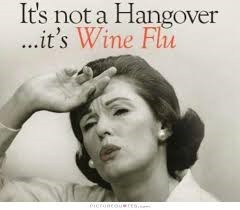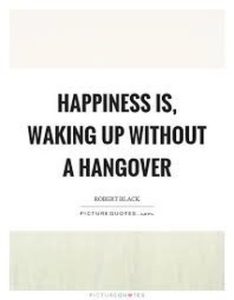By Nicholas Efstathis, Professional Practice Pharmacist, Business Support
With Christmas and News Years just around the corner, we’ve assembled the best and worst of hangover cures, to get you through those nightmare egg nog hangovers!

The hard stuff: Physiology
Once Alcohol (ethanol) is ingested, the liver begins the process of breaking down the ethanol into less harmful constituents. The process begins when the ethanol is converted by the liver to acetaldehyde, which is a highly toxic substance on its own. However, the acetaldehyde is quickly broken down into acetic acid (a less toxic substance) which can then be broken down further into water and carbon dioxide for excretion.
Alcohol is also a diuretic. This property is a result of the inhibition of the body’s natural production of ADH (anti-diuretic hormone) by the alcohol, which acts on the kidneys and prevents reabsorption of water.
Symptoms include general malaise (discomfort), thirst or dry mouth (dehydration), feeling dizzy or faint (low blood sugar), tiredness (sleep deprivation), loss of appetite, nausea or stomach ache (gastrointestinal complaints) and a feeling as though one’s heart is racing (increased cardiac output and vasodilation)3. Hangover symptoms peak when the alcohol concentration in the blood stream falls to almost zero 1. We’ve all been there, although some suffer more than others!
In addition to alcohol, congeners (flavouring or by-products of the fermentation process) found in drinks increase hangover symptoms. Dark liquors have a higher concentration of congeners compared to clear liquors. So, for example, drinking Bourbon on a night out is more likely to increase hangover symptoms than sticking to Vodka as your poison of preference 4. You might also find that your hangover is more severe after drinking only a small quantity of wine or liquor, when compared to someone drinking the same quantity of beer.
Fallacy
The following remedies are nothing more than old wives tales; try if you dare
- Prairie Oyster – raw egg yolk mixed with Worcestershire sauce, Tabasco sauce, salt and pepper

- Coca-Cola and milk
- Tomato juice and beer
- Hair of the dog – further consumption of alcohol
- Bloody Mary – Tomato juice, Vodka and combinations of other spices and flavourings including Worcestershire sauce, Tabasco sauce, piri piri sauce, beef consommé or bouillon, horseradish, celery, olives, salt, black pepper, cayenne pepper, lemon juice and celery salt
- Kudzu Root or Pueraria Lobata
- Artichoke tonic
- Sauna or steam baths
- Breathing oxygen supplies
- Fructose or glucose supply
- Vitamin B6
- Caffeinated drinks
- Milk thistle or Liver care products.
Fact:
There is no evidence that any treatment is very effective in curing hangovers 7. However the following will help relieve the symptoms and are good first aid for hangovers:
Rehydration: Drinking water or electrolyte replacement, while you drink (one for one is good ratio), before going to bed or later during the hangover phase will relieve or reduce the symptoms of thirst, dizziness, dry mouth and headache 5. Remember to consider other health conditions associated with the person when recommending electrolyte replacement.
Pain relief: NSAID (non-steroidal anti-inflammatory drugs) will treat the symptom of malaise but will have limited effect on headaches. They may increase the risk of stomach bleeding and liver damage 6. Paracetamol and codeine products may help settle the stomach and will have some effect on headaches.
Gastrointestinal complaints: Ranitidine will treat the heartburn or upset stomach symptom but check interactions with other medications or health conditions before recommending.
The best options in curing a hangover is to treat the symptoms, avoid over-indulgence in the first place and time cures all. Merry Christmas and have a hangover free 2017!
Reference
1. Verster, JC; Stephens, R; Penning, R; Rohsenow, D; McGeary, J; Levy, D; McKinney, A; Finnigan, F; Piasecki, TM; Adan, A; Batty, GD; Fliervoet, LA; Heffernan, T; Howland, J; Kim, DJ; Kruisselbrink, LD; Ling, J; McGregor, N; Murphy, RJ; van Nuland, M; Oudelaar, M; Parkes, A; Prat, G; Reed, N; Slutske, WS; Smith, G; Young, M; Alcohol Hangover Research, Group (June 2010). “The alcohol hangover research group consensus statement on best practice in alcohol hangover research.”. Current drug abuse reviews. 3 (2): 116–26. doi:10.2174/1874473711003020116. PMID 20712593.
2. Penning, R; McKinney, A; Verster, JC (May–Jun 2012). “Alcohol hangover symptoms and their contribution to the overall hangover severity.”. Alcohol and alcoholism (Oxford, Oxfordshire). 47 (3): 248–52. doi:10.1093/alcalc/ags029. PMID 22434663.
3. Stephens, R.; Ling, J.; Heffernan, T. M.; Heather, N.; Jones, K. (23 January 2008). “Review * A review of the literature on the cognitive effects of alcohol hangover”. Alcohol and Alcoholism. 43 (2): 163–170. doi:10.1093/alcalc/agm160. PMID 18238851.
4. Rohsenow, DJ; Howland, J (June 2010). “The role of beverage congeners in hangover and other residual effects of alcohol intoxication: a review”. Current drug abuse reviews. 3 (2): 76–9. doi:10.2174/1874473711003020076. PMID 20712591
5. Penning, R; van Nuland, M; Fliervoet, LA; Olivier, B; Verster, JC (June 2010). “The pathology of alcohol hangover”. Current drug abuse reviews. 3 (2): 68–75. doi:10.2174/1874473711003020068. PMID 20712596.
6. Verster, JC; Penning, R (June 2010). “Treatment and prevention of alcohol hangover“. Current drug abuse reviews. 3 (2): 103–9. doi:10.2174/1874473711003020103
7. MSc, R. L. (2013). http://www.dpic.org/article/professional/elusive-hangover-cure. Retrieved from British Columbia Drug and Poison Information Centre: www.dpic.org
